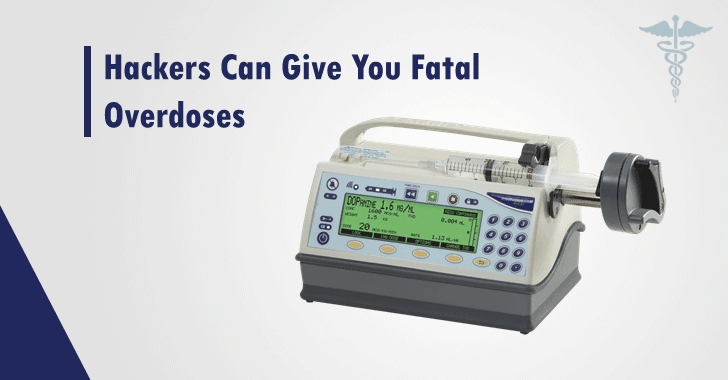| 关联规则 | 关联知识 | 关联工具 | 关联文档 | 关联抓包 |
| 参考1(官网) | |
| 参考2 | |
| 参考3 |
研究人员表示在明尼苏达州的特种医疗器械制造商史密斯医疗公司制造的Medfusion 4000无线注射器输液泵中存在八个安全漏洞,事实证明,在急性护理环境中使用的注射器输液泵可以被黑客远程访问并可以控制输液量,影响设备的预期操作。
 [出自:jiwo.org]
[出自:jiwo.org]
Internet-of-things are turning every industry into the computer industry, making customers think that their lives would be much easier with smart devices. However, such devices could potentially be compromised by hackers.
There are, of course, some really good reasons to connect certain devices to the Internet.
But does everything need to be connected? Of course, not—especially when it comes to medical devices.
Medical devices are increasingly found vulnerable to hacking. Earlier this month, the US Food and Drug Administration (FDA) recalled 465,000 pacemakers after they were found vulnerable to hackers.
Now, it turns out that a syringe infusion pump used in acute care settings could be remotely accessed and manipulated by hackers to impact the intended operation of the device, ICS-CERT warned in an advisoryissued on Thursday.
An independent security researcher has discovered not just one or two, but eight security vulnerabilities in the Medfusion 4000 Wireless Syringe Infusion Pump, which is manufactured by Minnesota-based speciality medical device maker Smiths Medical.
The devices are used across the world for delivering small doses of medication in acute critical care, such as neonatal and pediatric intensive care and the operating room.
Some of these vulnerabilities discovered by Scott Gayou are high in severity that can easily be exploited by a remote attacker to "gain unauthorized access and impact the intended operation of the pump."
According to the ICS-CERT, "Despite the segmented design, it may be possible for an attacker to compromise the communications module and the therapeutic module of the pump."
The most critical vulnerability (CVE-2017-12725) has been given a CVSS score of 9.8 and is related to the use of hard-coded usernames and passwords to automatically establish a wireless connection if the default configuration is not changed。
The high-severity flaws include:
The remaining are medium severity flaws which could be exploited by attackers to crash the communications and operational modules of the device, authenticate to telnet using hard-coded credentials, and obtain passwords from configuration files.
These vulnerabilities impact devices that are running versions 1.1, 1.5 and 1.6 of the firmware, and Smiths Medical has planned to release a new product version 1.6.1 in January 2018 to address these issues.
But in the meantime, healthcare organizations are recommended to apply some defensive measures including assigning static IP addresses to pumps, monitoring network activity for malicious servers, installing the pump on isolated networks, setting strong passwords, and regularly creating backups until patches are released.

